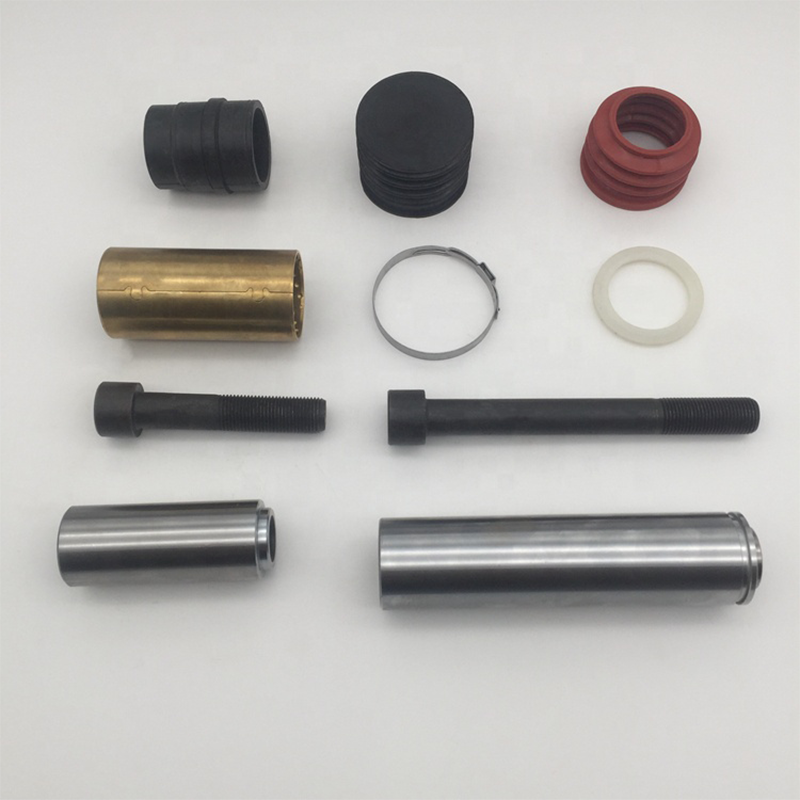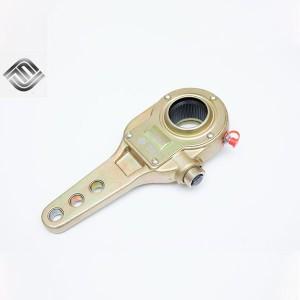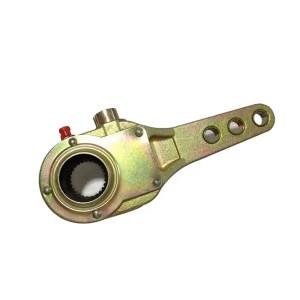
Have you noticed your car pulling to one side or heard squeaking when you brake? Maybe you see fluid near your wheels. You can tackle these problems at home. A Brake Calipers Repair Kit and some basic tools help you restore your brakes and keep your car safe.
Key Takeaways
- Spot brake problems early by watching for signs like your car pulling to one side, strange noises, or fluid leaks near the wheels.
- Use a Brake Calipers Repair Kit with the right tools and safety gear to fix caliper issues yourself, following step-by-step instructions carefully.
- Keep your brakes in good shape by checking them regularly, driving smoothly, and asking a professional for help if problems persist.
Identifying and Repairing Brake Caliper Problems with a Brake Calipers Repair Kit

Common Symptoms of Caliper Issues
You might notice some signs when your brake calipers start to fail. These symptoms can show up while you drive or when you check your car. Here are some things you should look for:
- Your car pulls to one side when you brake.
- You hear squeaking, grinding, or scraping noises.
- The brake pedal feels soft or spongy.
- You see brake fluid leaking near the wheels.
- Your brakes seem less powerful or take longer to stop the car.
- One wheel looks dirtier than the others because of brake dust.
Tip: If you spot any of these symptoms, check your brakes as soon as possible. Ignoring them can make things worse.
How to Confirm the Caliper is the Problem
You want to make sure the caliper is the real issue before you start repairs. Here’s how you can check:
- Park your car on a flat surface and turn off the engine.
- Remove the wheel where you noticed the problem.
- Look at the brake caliper and the area around it.
- Check for leaks, damaged seals, or uneven brake pad wear.
- Try to move the caliper by hand. If it feels stuck or very loose, it may need repair.
- Spin the wheel by hand (with the car safely lifted). If it drags or does not spin freely, the caliper could be sticking.
If you see any of these issues, you probably need a Brake Calipers Repair Kit to fix the problem.
Tools, Safety Gear, and What’s in a Brake Calipers Repair Kit
Before you start, gather everything you need. Safety comes first, so make sure you have the right gear.
Basic Tools:
- Socket set and wrenches
- Screwdrivers
- Pliers
- Brake cleaner
- Jack and jack stands
Safety Gear:
- Gloves
- Safety glasses
- Old clothes or coveralls
What’s in a Brake Calipers Repair Kit?
Here’s a table to show what you usually find in a kit like the KBCW010:
| Component | Purpose |
|---|---|
| Caliper guide pins | Help the caliper slide smoothly |
| Rubber seals | Prevent leaks and keep dirt out |
| Dust boots | Protect moving parts from dust and debris |
| Grease | Lubricates the caliper guides |
Note: The Brake Calipers Repair Kit caliper guides & seals repair kit KBCW010 gives you all these parts. You get everything you need to restore your caliper’s function.
Step-by-Step Guide to Using a Brake Calipers Repair Kit
Ready to fix your brakes? Follow these steps to use your Brake Calipers Repair Kit:
-
Lift the Car and Remove the Wheel
Use a jack and jack stands to lift your car. Take off the wheel to reach the brake caliper. -
Remove the Caliper
Use your socket set to unbolt the caliper. Carefully slide it off the brake rotor. -
Take Apart the Caliper
Remove the old guide pins, seals, and dust boots. Clean all parts with brake cleaner. -
Inspect the Caliper
Look for damage or rust. If you see deep grooves or cracks, you may need a new caliper. -
Install New Parts from the Kit
Put in the new seals, guide pins, and dust boots from your Brake Calipers Repair Kit. Use the grease to lubricate the moving parts. -
Reassemble the Caliper
Put the caliper back together. Make sure everything fits snugly. -
Reinstall the Caliper and Wheel
Bolt the caliper back onto the car. Put the wheel back on and lower the car. -
Test the Brakes
Pump the brake pedal a few times. Make sure it feels firm. Take a short drive to check your work.
Safety Reminder: Always double-check your work. If you feel unsure, ask a professional for help.
You can fix many brake problems at home with a Brake Calipers Repair Kit. You save money and keep your car safe on the road.
Safety, Professional Help, and Preventing Future Issues

Key Safety Tips for Brake Repairs
You always want to stay safe when working on your brakes. Start by parking your car on a flat surface. Use wheel chocks so your car does not roll. Always wear gloves and safety glasses. These protect your hands and eyes from dirt and chemicals. Use a jack and jack stands to lift your car. Never trust just the jack to hold your car up.
Tip: Keep your workspace clean. A tidy area helps you find tools quickly and avoid accidents.
Check your tools before you start. Make sure everything works. Read your car’s manual for any special steps. Take your time. Rushing can lead to mistakes.
When to Call a Professional
Sometimes, you need extra help. If you see deep rust or cracks in your caliper, call a mechanic. If you feel unsure about any step, ask a pro. Brake fluid leaks that do not stop after repair need expert attention. You should also get help if your brakes still feel weak after you finish.
Here are signs you need a professional:
- You hear loud grinding after repair.
- The brake pedal sinks to the floor.
- You see new leaks after fixing the caliper.
Maintenance Tips to Prevent Caliper Problems
You can keep your brakes working well with simple habits. Check your brakes every few months. Look for leaks, worn pads, or dirty calipers. Clean your calipers with brake cleaner. Replace brake fluid as your car’s manual suggests.
Note: Regular checks help you catch problems early. This keeps your car safe and saves money in the long run.
Try to drive smoothly. Hard stops wear out your brakes faster. With these habits, you help your calipers last longer and work better.
You can fix most brake caliper problems at home with a Brake Calipers Repair Kit. Always put safety first. If you feel unsure, ask a professional. Keep up with regular checks. Your brakes will last longer and your car will stay safe.
- Stay safe
- Fix with confidence
- Enjoy smooth stops
FAQ
How often should you use a Brake Calipers Repair Kit?
You should check your calipers every 12 months. Use the kit if you see leaks, hear noises, or notice uneven braking.
Can you use the KBCW010 kit on any car?
The KBCW010 kit fits many vehicles. Always check your car’s manual or ask the supplier to make sure it matches your model.
What if you still hear squeaking after the repair?
- Double-check your installation.
- Clean the caliper and rotor.
- Make sure you used enough grease.
- If squeaking continues, ask a mechanic for help.
Post time: Jul-14-2025





